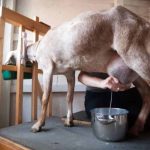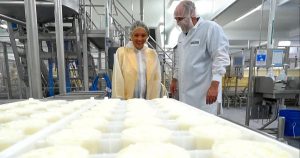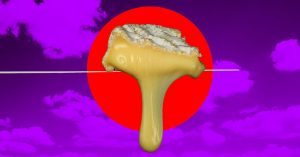
“Cheese-making has been around, there are lots of different guesses right now, but probably somewhere in the region of 8000 years,” CDR and University of Wisconsin Madison Professor of Food Science John Lucey said.
From the Bible to the Romans, cheese has been celebrated for centuries. Here in America’s Dairyland, it is just one of the countless creations that come from milk.
“When they look at the economic impact for dairy in Wisconsin, it’s around $45 billion,” Lucey said. “It’s a monstrously important, economically important sector here in Wisconsin.”
Since 1986, the CDR, located at UW Madison, has been a resource for many.
“It’s a partnership with the dairy farmers,” Lucey explained. “So, about 60 to 70% of our funding comes directly from dairy farmers. Our mission is really to grow the dairy industry and add value back to help the dairy farmers.”
Lucey tells CBS 58 that every year, more than 1000 people come to learn about the research his team does in the newly constructed Babcock Building. From cheese to yogurts, to shelf-stable milk, the list is endless.
“Within the Babcock building, there isn’t a dairy product we can’t make,” Lucey said.
They also analyze something no machine can calculate, human taste. CDR Sensory Coordinator Brandon Prochaska is the son of a dairy farmer, so working to help farmers is something he is excited about, especially when the service he provides is irreplaceable.
“At the end of the day, humans are the people that are consuming the product,” Prochaska said.
Prochaska runs a team of Trained Consumer Panelists, also known as Cheese Tasters.
“There’s really no substitute for the nuances of, you know, different styles of teeth, and different tastes, preferences, and things like that. So, it’s always going to come down to humans, and we have pretty good job security because of that.”
Eating cheese for money sounds easy, but these panelists must learn the ins and outs of dairy research.
“You could spend more than 20 hours in training just to get ready to test a product, so this is not just wandering off the street and saying, ‘I think this looks good. I love cheese’,” Lucey said.
The actual cheese tasting is a long and sometimes tedious process.
“Everyone’s [eating] it exactly the same way. So, we’re very meticulous and very methodical,” Prochaska said.
For Cheese Taster Kristin Panzica, the training was more than worth it.
“I found this job description and I’m like, well that sounds intriguing, and I live in Wisconsin, so I am like, may as well work around dairy and cheese,” she said.
“A lot of people would think that you would hate pizza and never want to eat it again, but it makes it more intriguing, I think, and now when I look at ingredient lists for like frozen pizza, or I’m going to do a takeout, I’m like, I wonder what kind of cheeses and oils and butter, and things that they’re using.”
It is mostly trained panelists doing the tasting, but they also do random consumer testing.
“We have sensory booths where they’re tasting products kind of being sequestered. They can type in their tablet anything they think about the product, and we get up to 200 people to come through and evaluate different dairy products, and they just say what they liked and what they don’t like about it, it is pretty fun,” Prochaska said.
All this product testing is critical for businesses.
“So, they’re curious about maybe launching a new product or reformulating a product, and seeing, is it good enough for prime time? Can we compete with maybe what we are looking to compete with? Is it a superior product to maybe what they had before?” Prochaska explained.
The CDR is world-renowned for its research and is often judging products from around the globe.
“Since we don’t sell any products here at the University, we’re kind of independent. We work with everybody. We just like good cheese,” Lucey said.
But they say there is always more to learn, so they will continue to churn the industry forward.
“So, it’s been around for a very long time, much earlier than our recorded written history. But it continues to grow and continues to diversify around the world,” Lucey explained.
























